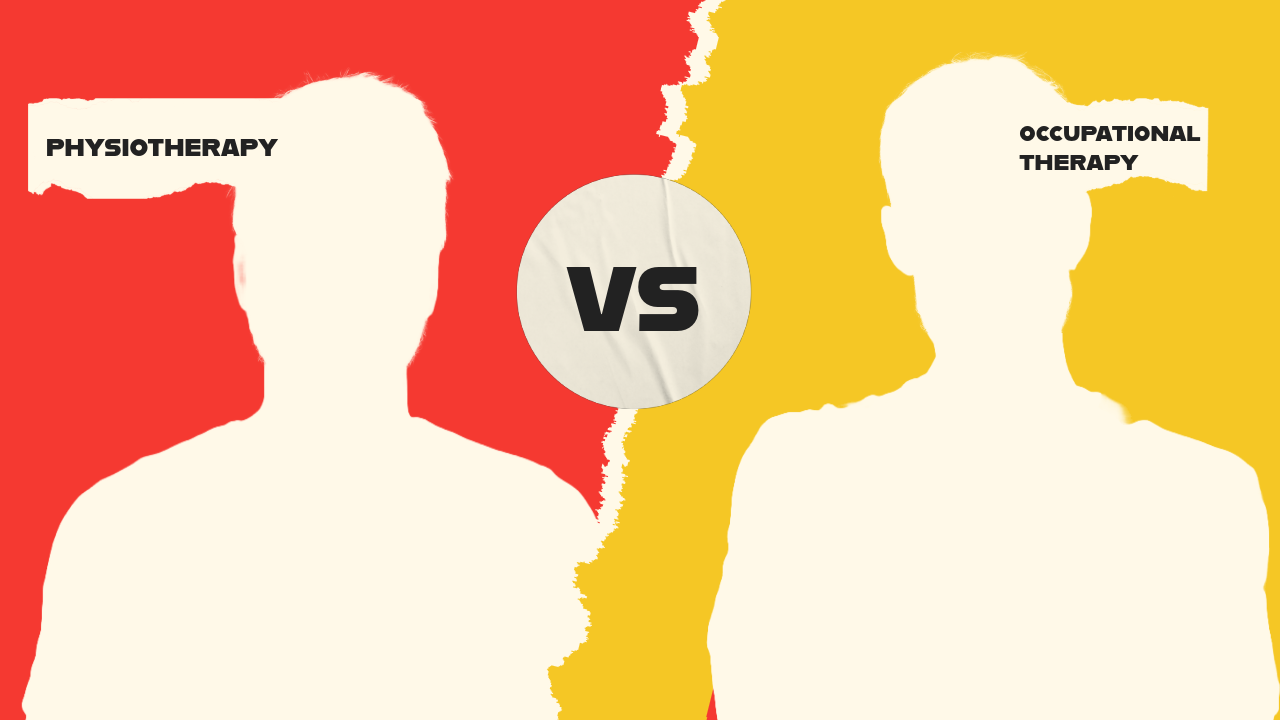Physiotherapy vs Occupational Therapy: What’s the Difference and Which Do You Need?
Physiotherapy vs Occupational Therapy: What’s the Difference and Which Do You Need?
Understanding the difference between physiotherapy and occupational therapy helps you make informed choices about your recovery and long-term health.
Both are essential parts of rehabilitation — but they serve different purposes.
What Is Physiotherapy?
Physiotherapy (or physical therapy) focuses on restoring movement, strength, and function after injury, illness, or surgery. The main goal is to help patients move better, reduce pain, and regain independence.
Physiotherapists use:
Exercise programs to improve flexibility, strength, and balance
Manual therapy such as massage and joint mobilization
Electrotherapy or ultrasound to reduce pain and inflammation
We treat conditions like sports injuries, back pain, arthritis, post-surgical recovery, and neurological disorders (e.g., stroke or Parkinson’s).
A big part of physiotherapy is movement and education — teaching you how to move safely, prevent injury, and take charge of your own recovery.
What Is Occupational Therapy?
Occupational therapy (OT) helps people perform daily activities (“occupations”) — from getting dressed to working or cooking. It’s not just about physical recovery, but also cognitive and emotional adaptation.
Occupational therapists focus on:
Improving fine motor skills and coordination
Helping clients adjust to physical or cognitive limitations
Teaching adaptive techniques or introducing assistive tools
Recommending environmental modifications at home or work
They often work with children with developmental conditions like autism or ADHD, adults with mental health challenges, or individuals recovering from injury, stroke, or chronic illness.
The focus is holistic: not just on healing the body, but restoring independence and confidence.
Physiotherapy vs Occupational Therapy: Key Differences
|
Aspect
|
Physiotherapy
|
Occupational Therapy
|
|
Main Focus
|
Restoring movement, strength, and function
|
Enabling daily activities and independence
|
|
Approach
|
Exercise, manual therapy, and rehabilitation.
|
Adaptation, cognitive strategies, and environmental support
|
|
Common Patients
|
Post-surgery, sports injuries, stroke, chronic pain
|
Developmental disorders, cognitive or mental health challenges, physical disabilities
|
|
Goal
|
Physical recovery
|
Functional and daily-life recovery
|
Where They Work Together
In many cases, both therapies overlap. For example:
After a stroke, a physiotherapist helps rebuild muscle control, while an occupational therapist helps the patient relearn daily skills like buttoning a shirt or writing.
For orthopaedic recovery, physiotherapy improves strength, while OT ensures the patient can return to work or daily routines comfortably.
This integrated care model is increasingly common in Singapore’s healthcare system and digital rehabilitation apps.
The Modern Shift: Digital and AI-Assisted Therapy
Today, digital health tools like motion sensors, AI-driven posture tracking, and tele-rehabilitation platforms are transforming both fields.
Physiotherapists use AI-guided exercise apps to monitor form and progress remotely.
Occupational therapists leverage smart home setups to improve safety and independence for elderly or physically limited individuals.
This makes therapy more accessible, data-driven, and personalized.
What do I need?
Physiotherapy focuses on movement and recovery, while occupational therapy focuses on function and daily independence. Both work hand-in-hand to help patients live healthier, more fulfilling lives.
If you’re unsure which therapy you need, consult your GP or a rehab clinic — many offer combined care plans that bridge both physical and functional recovery.
You can also contact us at Movemed Physio for a consultation. Our team provides expert physiotherapy support for a wide range of needs — from injury rehabilitation and post-surgical recovery to gait analysis, posture correction, and chronic pain management.
About MoveMed Physiotherapy Singapore
At MoveMed, we support your recovery through purposeful movement.
Our professionally trained physiotherapists at Novena provide tailored sessions in a well-equipped facility—featuring treatment beds, shockwave therapy machines and more —to help you regain strength, mobility, and confidence.
Whether it’s pre-op rehab, pain management or post-op rehab, our team is here to guide your journey every step of the way.
📞 Call / WhatsApp: +65 9627 2000
📧 Email: hello@movemedsg.com
Regain control. Move better. Live stronger.

